Steve Sanford
Well-known member
Well, she's pretty much done. The Scooter has enjoyed a comfortable winter in the shop and has just ventured out for a few "after" photos. I still need to measure her carefully and draw up both lines plans and construction drawings.

As usual, below is a sampling of recent activity. The full step-by-step is on my site at:
http://stevenjaysanford.com/great-south-bay-scooter/
If you have been following along and go to the site, you can pick up the tale where I left off last time - right after Gallery 8. In any event, remember to click on the first image in any Gallery so you can view it as a slide show (then close each Gallery show with the little x in the upper left).
The first job was an "outside job" - for the safety of both the shop and me. I burned all the old paint out of the interior - or at least from the bays I could reach without removing the decks. I actually enjoy the work because it moves right along, with obvious progress. And, I did not need the water that was always handy.

I added 3 frames to stiffen the floor - because replacing each of the cracked frames - each sawn from a hackmatack knee - was beyond the scope of this project. I rationalized this "strategic" decision several ways - but mostly because these frames have been cracked for as long as I can recalll and yet the hull does not "work" at all in use.
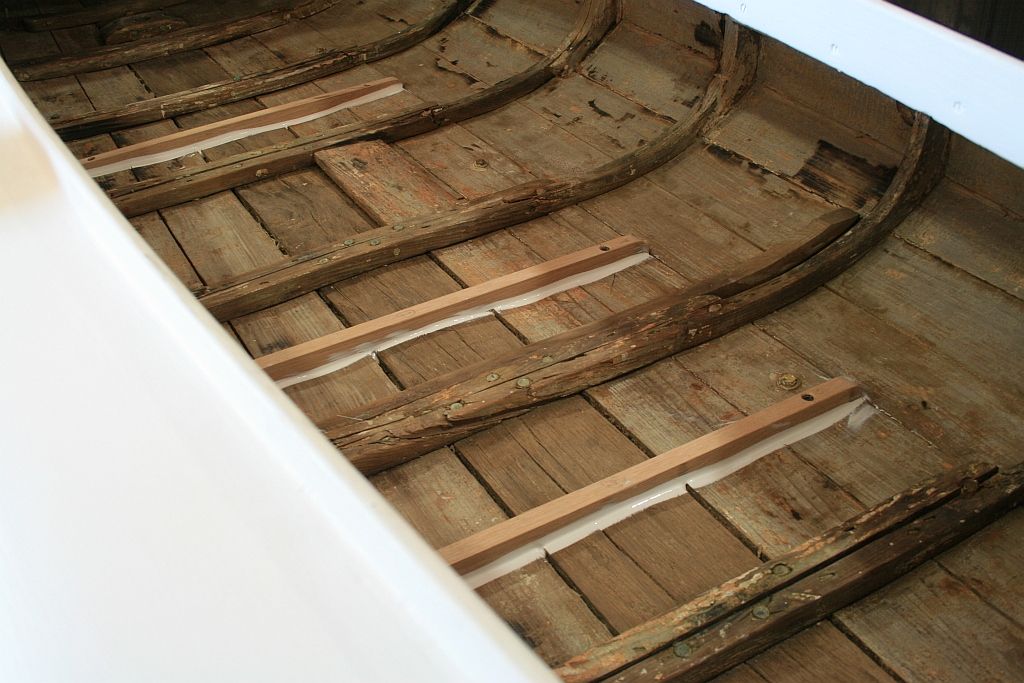
The interior got primer and 2 coats of flat white paint. I also caulked the larger seams so that bilge water was less likely to work its way into the hull.
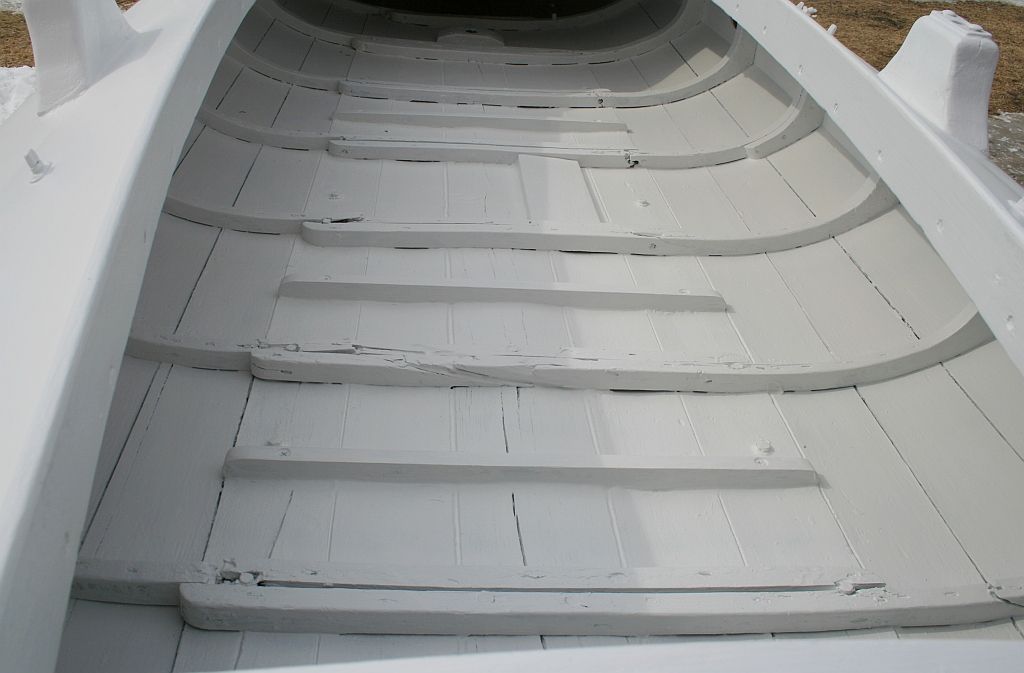
The cowling needed new canvas. All of my canvas is now Sunbrella.
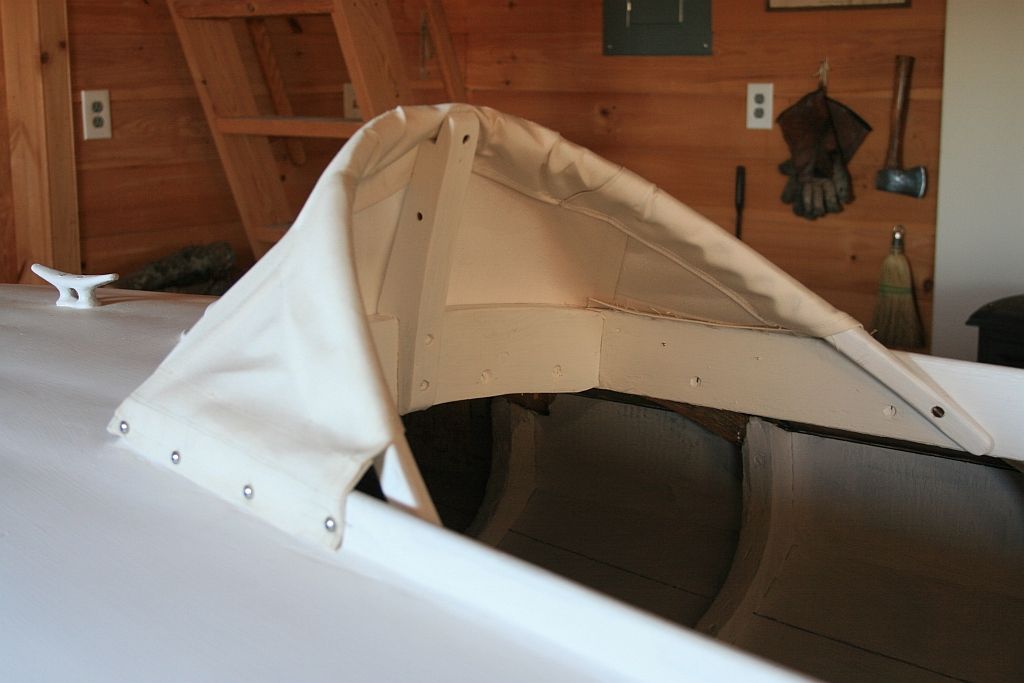
The lap canvas is held in place while gunning with shock cord - and 2 sash hangers - normally used to hold screens or storms over windows.
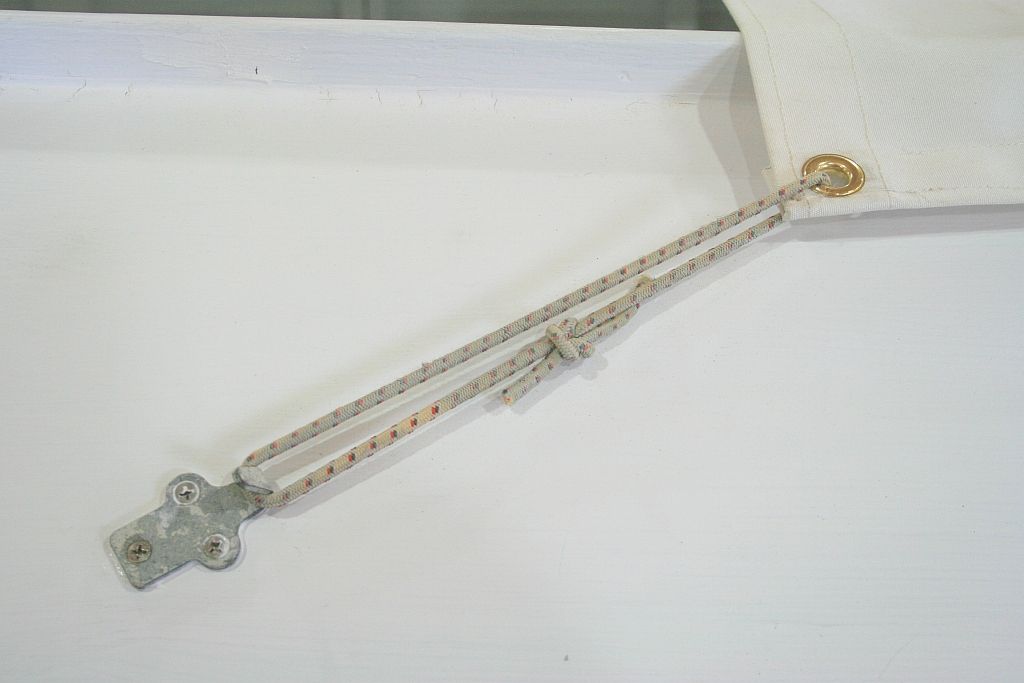
The cockpit cover does not need to be white. Being distinctly Old School, I like the look of traditional "pearl grey" canvas - even though it is, in fact, Sunbrella polyester fabric.
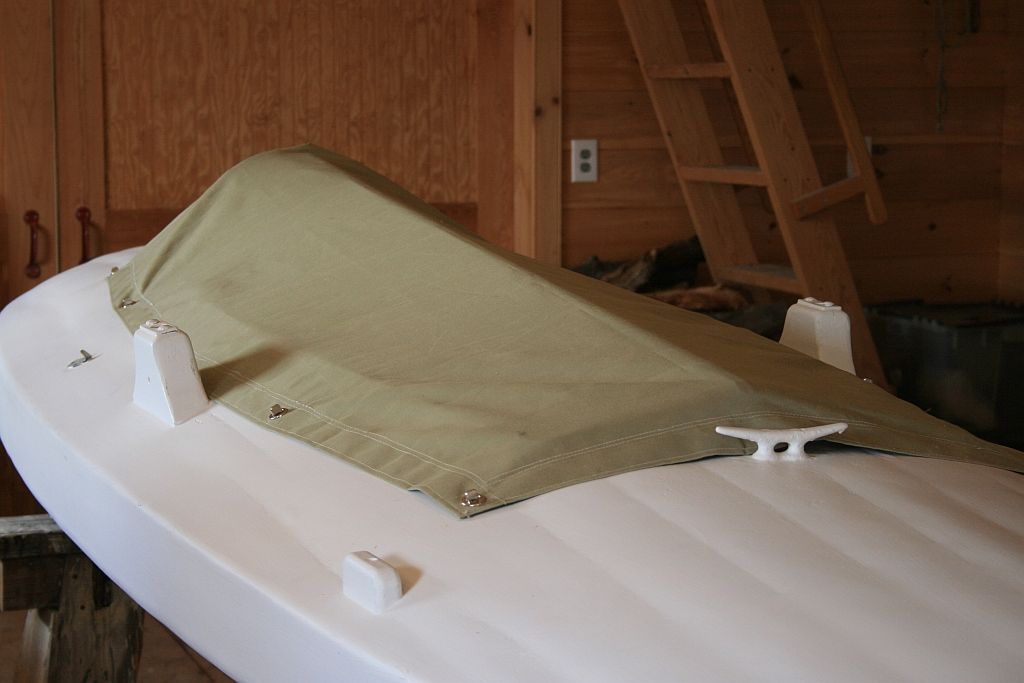
The ash oar handles - and a bunch of other gear - got 2 coats of linseed oil that could slowly penetrate in the warm shop.
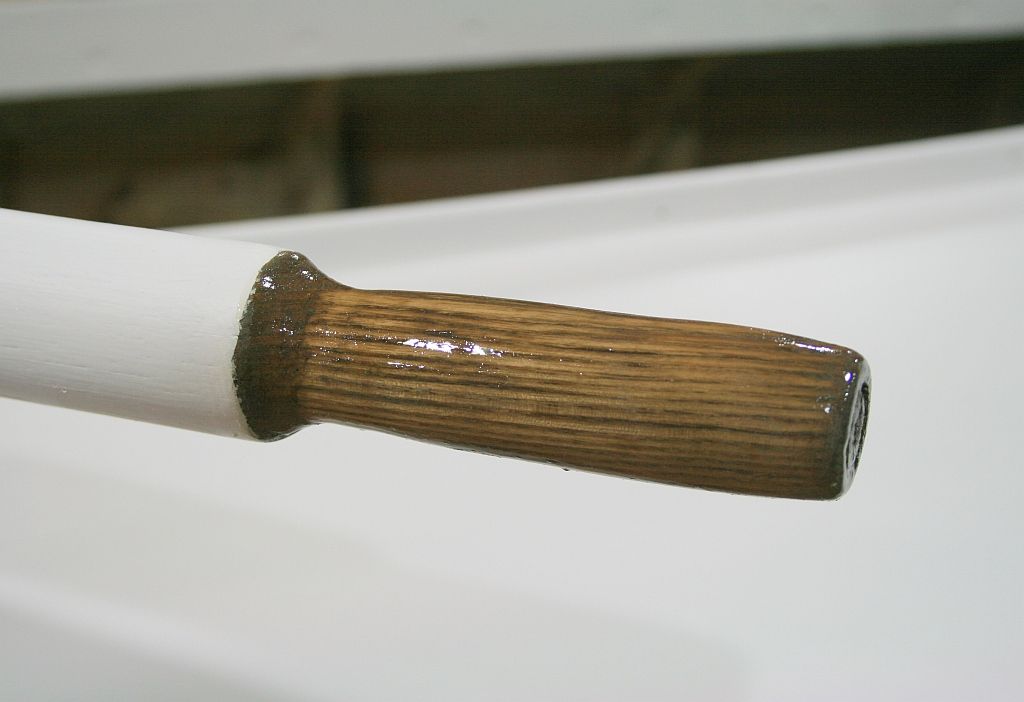
Good neighbor and master woodworker Kirk Fox turned this plug from Black Locust. It replaces the pipe cap that has been on the boat as long as I can remember - but is a return to the traditional.
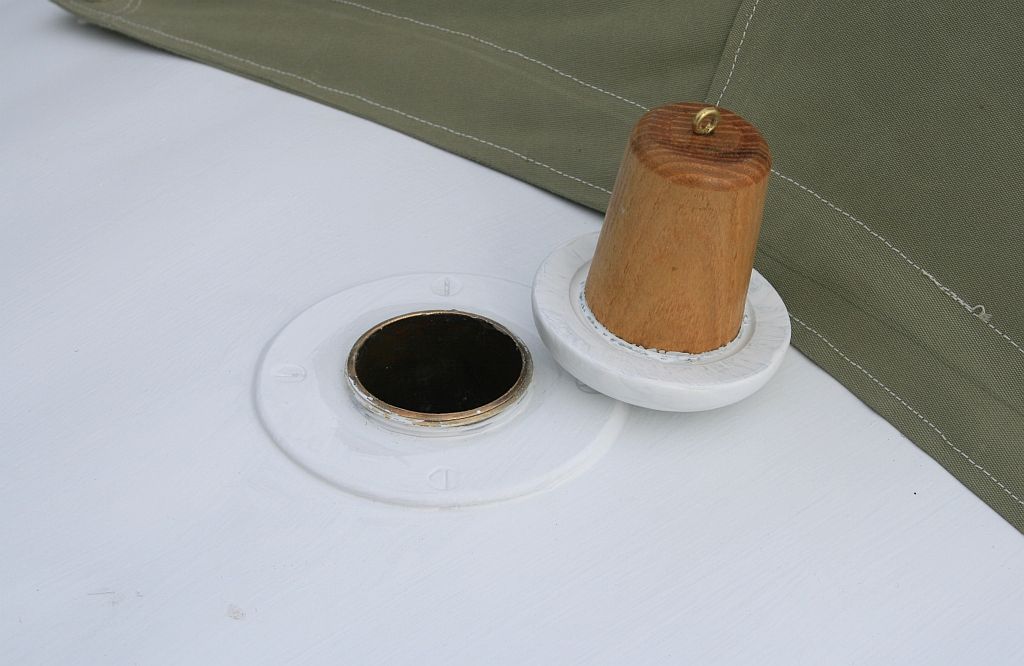
Although I have never put a name on any of my duckboats, I took the plunge after my cousin Gary advised me that I had to name it after my Dad. So, with a few minutes and a few dollars at diylettering.com, his name now appears on the port bow.

I like spun polyester for any lines I have to handle - and because it splices and wears so nicely. The bow painter is rove through the new fairlead and permanently spliced to the foredeck cleat. The snap hook will go to a ring on the float of the bow anchor.

The Ted Sanford is ready for sea trials - but where to find a "sea" in a winter like this ??? The Massey-Ferguson needed chains to haul the rig back to the Hemlock Swamp - which at least offered some nice ice.

Once on the ice, the first task is to rig the stool rack and fill it with stool. Obviously, these birds - without their lines or anchors - are just posing...
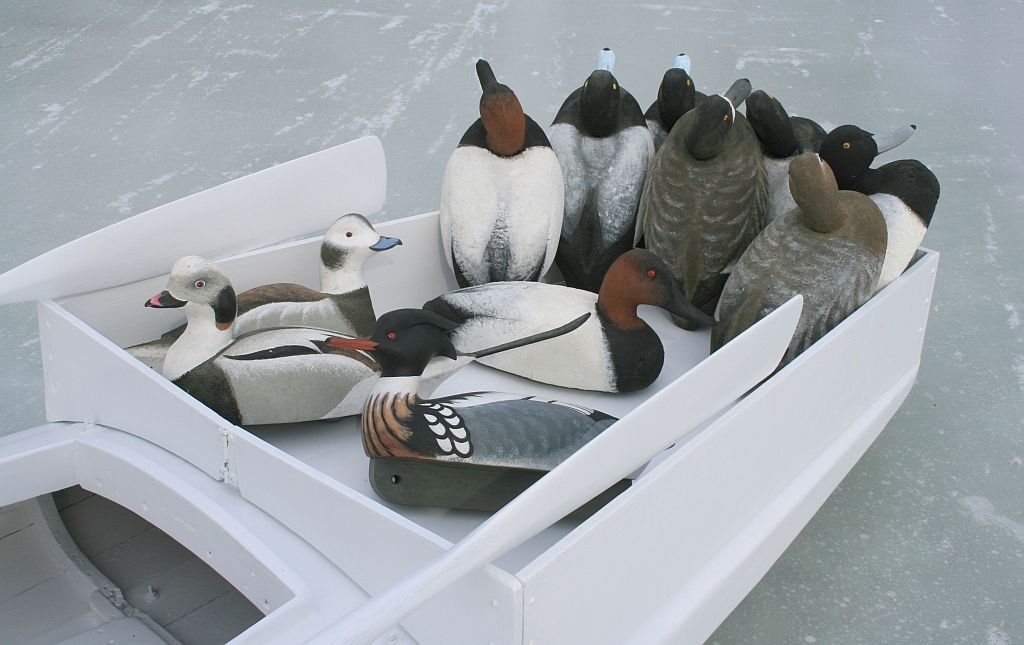
The grapnel is just one of the ways to get over soft ice. This freshwater ice was so hard that I could spin or slide the Scooter with just a fingertip.

All the loose gear stows below decks. The stool rack goes beneath the afterdeck.

Here is the lap canvas rigged for gunning. It has plenty of "give" when one sits up to shoot. Note also how the rowing stool serves as the head rest.

Here is what those Broadie-beaks might see on their first pass - before they complete their figure-8 and tumble into the rig. If any birds flair from seeing the name, it is only because my Dad's legend lives on....

The lap canvas is rolled onto the rear deck when you row out to pick up downed birds.
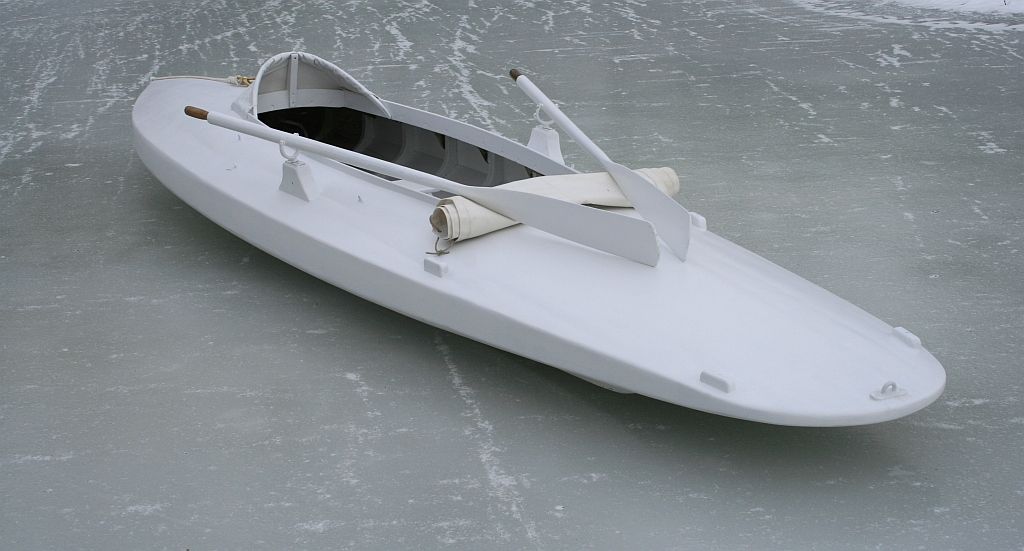
Buttoned up against the elements, the Scooter is ready once again to campaign on semi-frozen waters throughout the Empire State.

Now, back to the barn for those measurements....
All the best,
SJS

As usual, below is a sampling of recent activity. The full step-by-step is on my site at:
http://stevenjaysanford.com/great-south-bay-scooter/
If you have been following along and go to the site, you can pick up the tale where I left off last time - right after Gallery 8. In any event, remember to click on the first image in any Gallery so you can view it as a slide show (then close each Gallery show with the little x in the upper left).
The first job was an "outside job" - for the safety of both the shop and me. I burned all the old paint out of the interior - or at least from the bays I could reach without removing the decks. I actually enjoy the work because it moves right along, with obvious progress. And, I did not need the water that was always handy.

I added 3 frames to stiffen the floor - because replacing each of the cracked frames - each sawn from a hackmatack knee - was beyond the scope of this project. I rationalized this "strategic" decision several ways - but mostly because these frames have been cracked for as long as I can recalll and yet the hull does not "work" at all in use.

The interior got primer and 2 coats of flat white paint. I also caulked the larger seams so that bilge water was less likely to work its way into the hull.

The cowling needed new canvas. All of my canvas is now Sunbrella.

The lap canvas is held in place while gunning with shock cord - and 2 sash hangers - normally used to hold screens or storms over windows.

The cockpit cover does not need to be white. Being distinctly Old School, I like the look of traditional "pearl grey" canvas - even though it is, in fact, Sunbrella polyester fabric.

The ash oar handles - and a bunch of other gear - got 2 coats of linseed oil that could slowly penetrate in the warm shop.

Good neighbor and master woodworker Kirk Fox turned this plug from Black Locust. It replaces the pipe cap that has been on the boat as long as I can remember - but is a return to the traditional.

Although I have never put a name on any of my duckboats, I took the plunge after my cousin Gary advised me that I had to name it after my Dad. So, with a few minutes and a few dollars at diylettering.com, his name now appears on the port bow.

I like spun polyester for any lines I have to handle - and because it splices and wears so nicely. The bow painter is rove through the new fairlead and permanently spliced to the foredeck cleat. The snap hook will go to a ring on the float of the bow anchor.

The Ted Sanford is ready for sea trials - but where to find a "sea" in a winter like this ??? The Massey-Ferguson needed chains to haul the rig back to the Hemlock Swamp - which at least offered some nice ice.

Once on the ice, the first task is to rig the stool rack and fill it with stool. Obviously, these birds - without their lines or anchors - are just posing...

The grapnel is just one of the ways to get over soft ice. This freshwater ice was so hard that I could spin or slide the Scooter with just a fingertip.

All the loose gear stows below decks. The stool rack goes beneath the afterdeck.

Here is the lap canvas rigged for gunning. It has plenty of "give" when one sits up to shoot. Note also how the rowing stool serves as the head rest.

Here is what those Broadie-beaks might see on their first pass - before they complete their figure-8 and tumble into the rig. If any birds flair from seeing the name, it is only because my Dad's legend lives on....

The lap canvas is rolled onto the rear deck when you row out to pick up downed birds.

Buttoned up against the elements, the Scooter is ready once again to campaign on semi-frozen waters throughout the Empire State.

Now, back to the barn for those measurements....
All the best,
SJS
